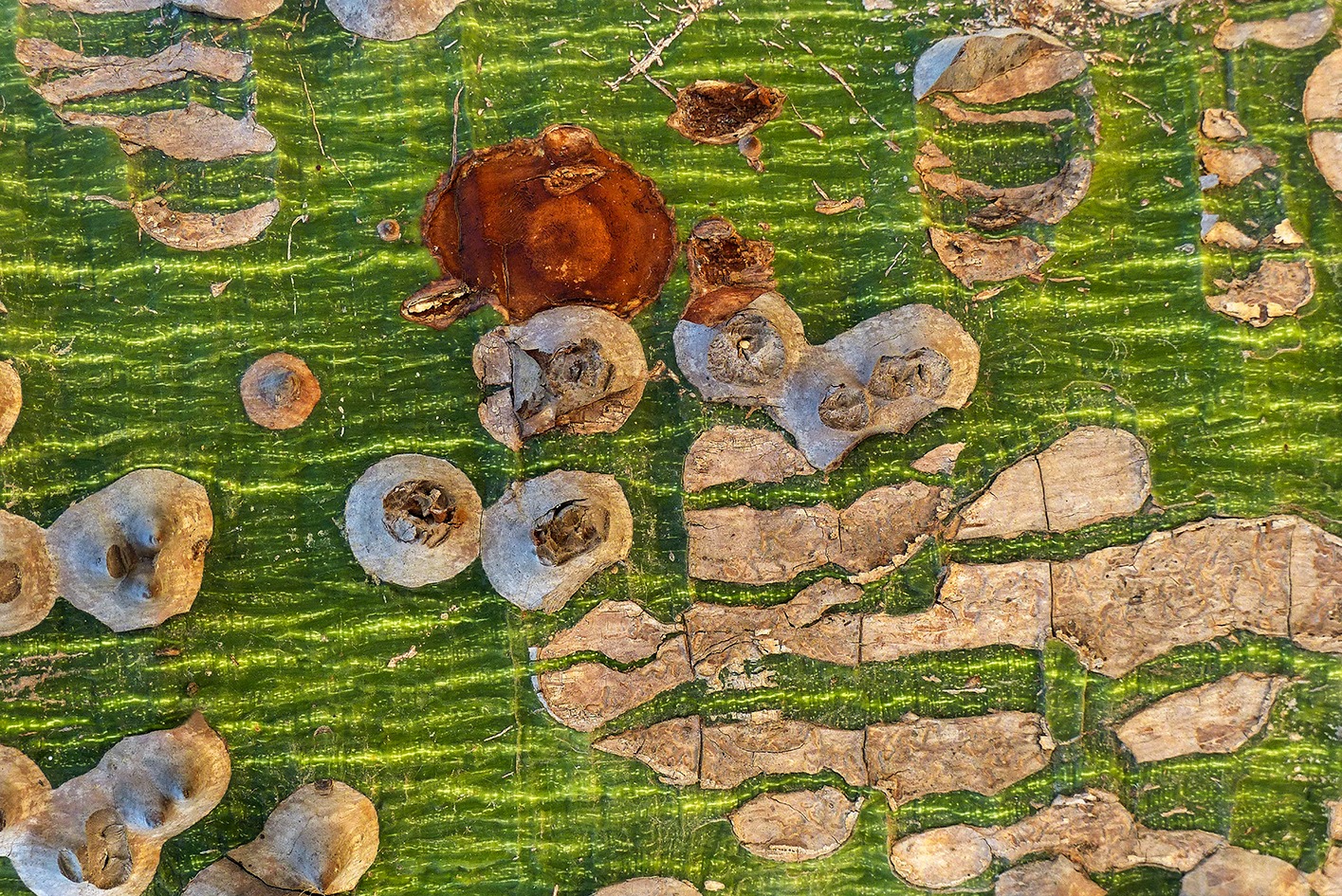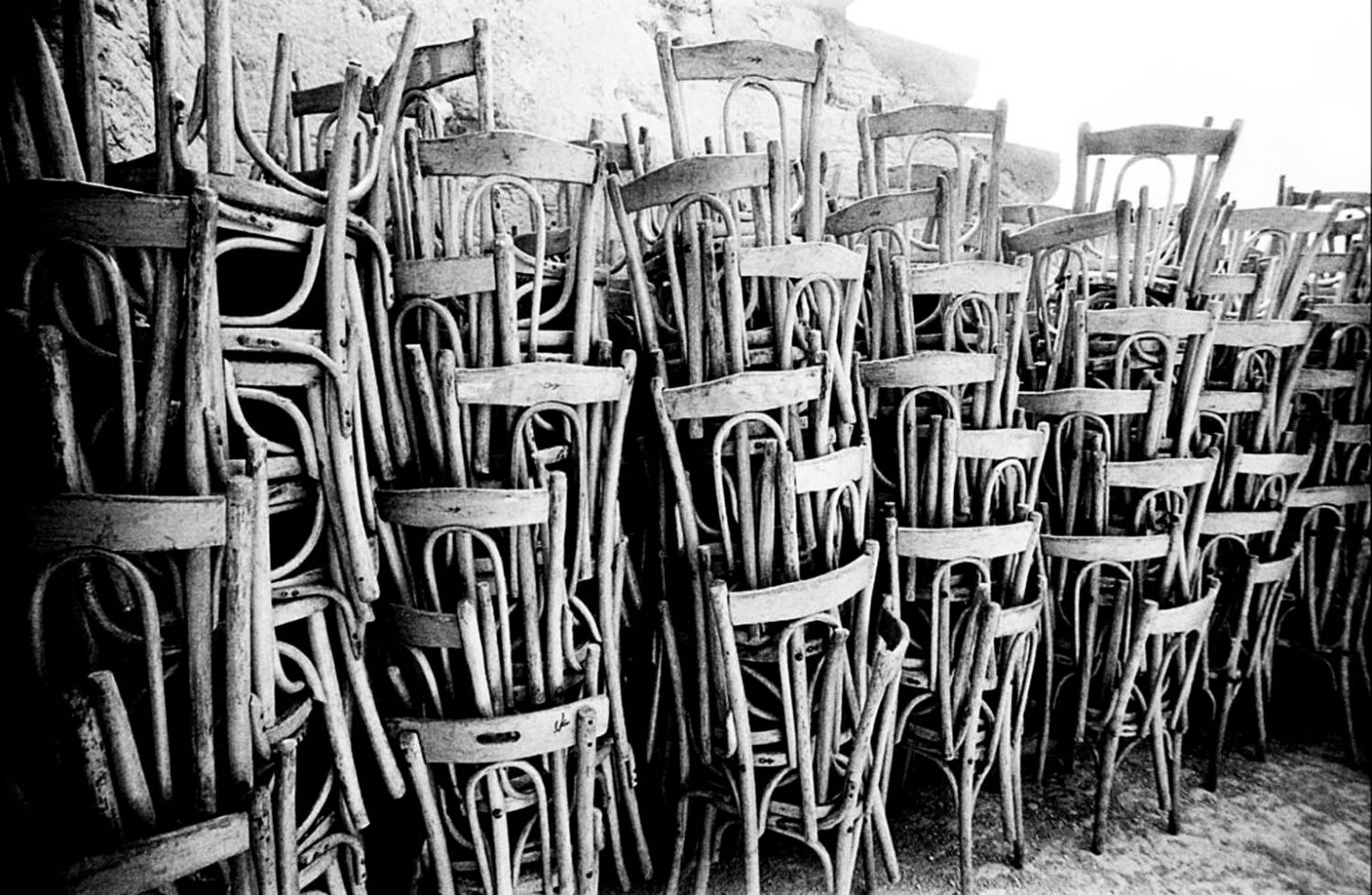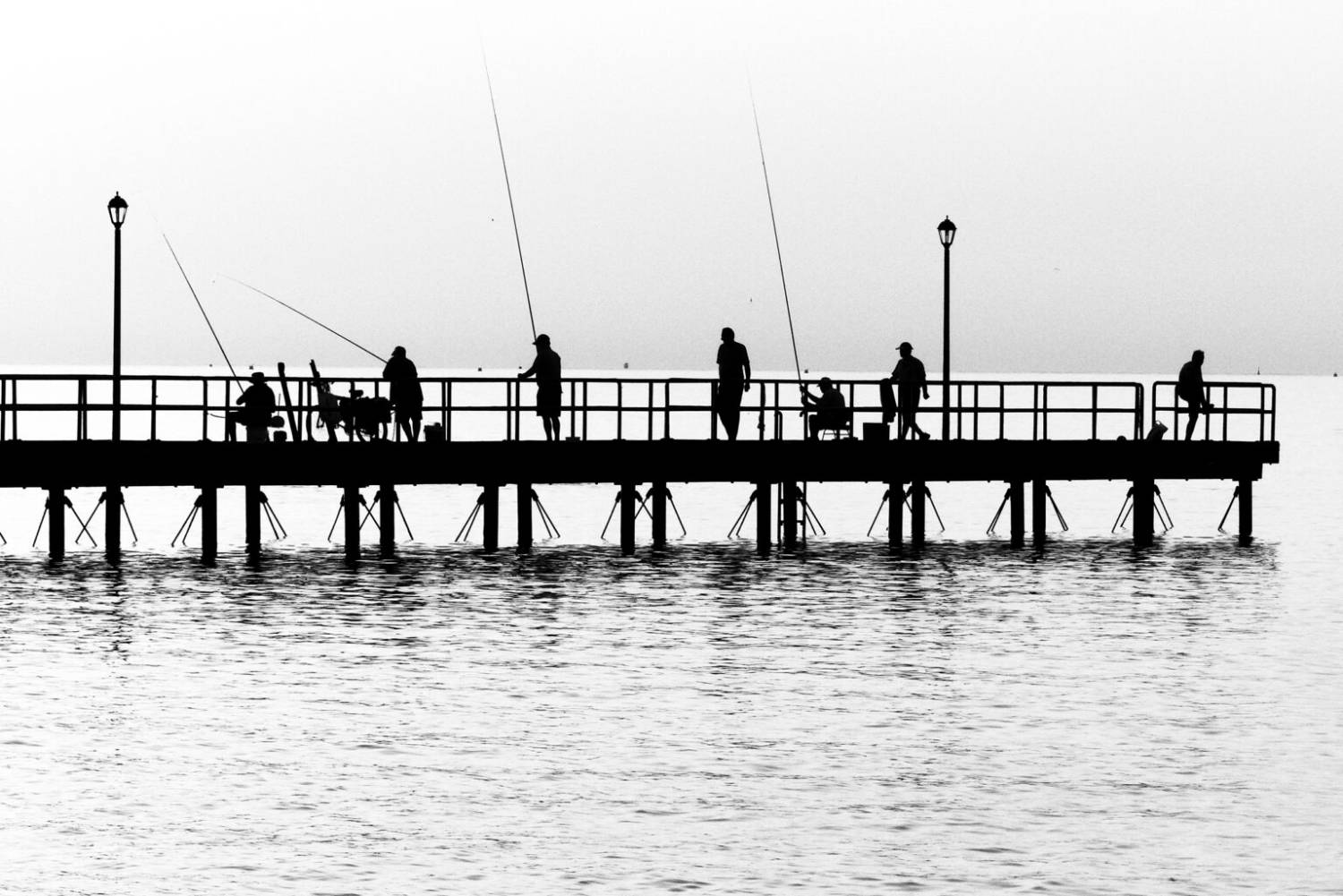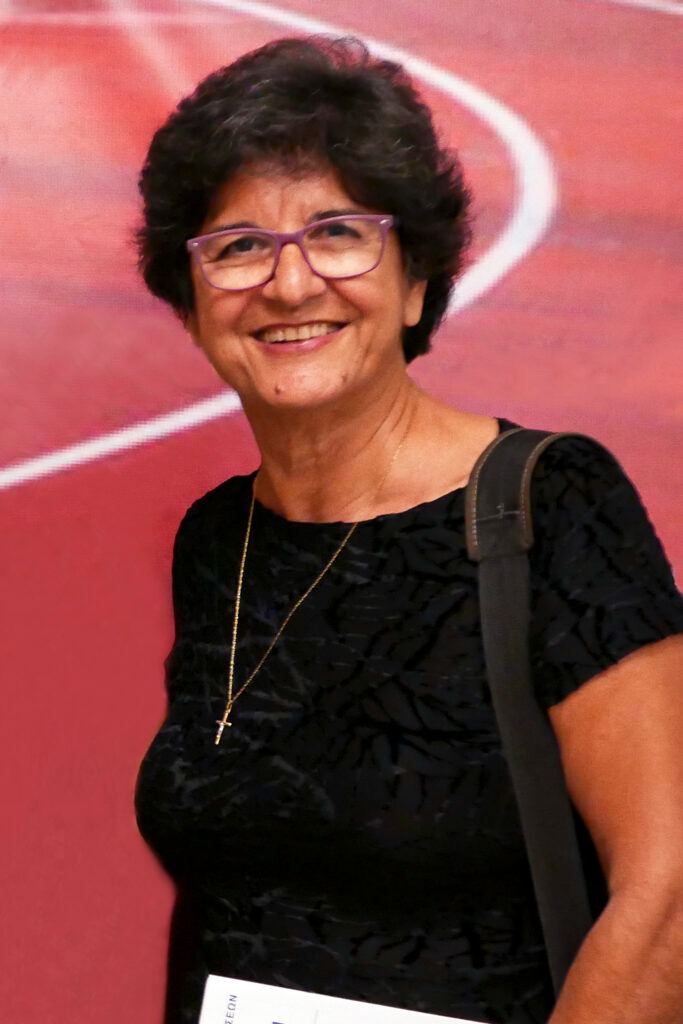She took her first photos at sports events in Famagusta. The loss of her photographs during the 1974 invasion pushed her to engage more systematically with photography as a refugee in Limassol.
Erato Kantouna experienced firsthand all the technological advancements and the transition from analogue to digital cameras. However, she still enters the darkroom to print black and white photos. On the occasion of her exhibition “One Click Away” at Lumiere Gallery, she recounts moments from a 50-year creative journey.
Do you remember your first photos in Famagusta?
I took photos from a very young age in Famagusta, at family gatherings, school meetings, and excursions, and especially at sports events where I participated. I was an athlete for many years at the Gymnastics Club Evagoras in Famagusta, competing in track and field events. I always carried my camera with me and documented significant moments.

What camera did you initially use?
Initially, I photographed with a simple camera, later with a German Voigtlander with a viewfinder, a gift from an uncle. Many photos remained behind in Famagusta, like everything else, when we left our city in August 1974 and settled in Limassol. The positive thing is that we found some photos we had sent to relatives living abroad, along with Christmas cards and studio photos we took at the studios of Kostas Vasileiou and Nikos Stylianou.
Have any other photos from your house in Famagusta been rescued?
When the checkpoints opened, it took several years until I decided to go to Famagusta. In the neighbourhood where we lived, they demolished everything over a considerable area and created a camp with a high fence. When a cousin of mine visited the area in 2003, a Turkish Cypriot neighbour who found him told him she had some photos of mine. She told her to give them to him to bring to me, but she wanted me to go and get them myself. Eventually, on a subsequent visit by my cousin to Famagusta, he persuaded her and she gave them to him. Inside a tin box of cookies were negatives and family photos, also from our school trip to Greece, as well as some sports photos.

Did the loss of your photos play a role in your dedication to photography?
Their loss pushed me to engage even more with the art of photography, albeit at an amateur level. In Limassol, I initially bought a relatively cheap camera and started recording everything in the city with more zeal, especially some significant historic buildings with magnificent architectural elements, which were demolished to make way for apartment buildings.
Did the fact that you grew up by the sea influence your themes?
I was fortunate to be born and raised near the sea of Famagusta, from a family with a direct connection to it. My father was a captain in the tugboats of Famagusta, my uncle was a captain on ships, and my grandfather was a fisherman. The sea is a subject that has always interested me and continues to interest me. I am inspired by ships on the open sea, fishing boats, waves, seagulls flying, and old docks. My themes are also taken from everyday life, the people, the nature of Cyprus, and my travels abroad.

Which of your participations in international competitions do you think that stand out?
I have been a member of the Photographic Society of Cyprus since the establishment of the Limassol department in 1984, and for many years now, I have been a member of the Council. I started participating in local, national, and international competitions and exhibitions, winning awards, commendations, and distinctions. In 1997, I received the international title AFIAP (Art FIAP – photographer artist) from the International Federation of Photographic Art (FIAP), and in 1999, I was the first female photographer in Cyprus (and Greece) to be awarded the international title EFIAP (Excellence FIAP – excellent photographer) by FIAP, and later, in 2009, the title EFIAP/b.
Technology evolved, yet you still print photos in the darkroom?
In analogue photography, I used slides, colour, and black-and-white films for many years, which I developed and printed in the darkroom. I still develop and print black-and-white photos, to a lesser extent though. The feeling in the darkroom is unique. I like to print my photos myself. Technology is making huge leaps everywhere, including in cameras. As much as I resisted and tried to remain faithful to analogue cameras and film, in 2010 I acquired my first digital camera. I try to capture the right moment in my photography, as I don’t like to intervene afterwards in Photoshop. I worked for many years at the well-known Edward’s studio, known to all Limassolians (and not only).

Which photographers have inspired you?
There are several photographers whose work I admire. Among them are the French Henri Cartier-Bresson, the Brazilian Sebastiao Salgado, and the famous Greek Nellys (Elli Sougioultzoglou-Seraidari), who in the 1920s was accused of daring to photograph a naked dancer on the Acropolis, desecrating the sacred space.
Do you remember your first exhibition in Cyprus?
In 1998, I presented my first solo exhibition titled “Selections” in Limassol and Nicosia, with 70 black and white photos printed by myself in the darkroom. I did this exhibition after receiving the first international title Art FIAP, and I just wanted to showcase my work. It was a selection of photos on various subjects.
Have you travelled to many countries around the world? Where did you take the best photos?
I have travelled to many countries with photographic interest, such as India, distant Nepal, exotic Morocco, Vietnam, China, Cuba, and elsewhere. If someone asked me which of these I would like to revisit, I would say India. In this country, you will see strange, unusual images. The colours, the figures, the clothing of the people, everything is different from other cultures. You see a cow sitting in the middle of the road, and drivers stop and wait for it to leave on its own because it is their sacred animal. I will also not forget a trip from Nepal to India, where the plane filled up and left. So they put us on a small plane that flew over the Himalayas, and we reached the border with India. The images were breathtaking. Then we reached Varanasi, where we saw thousands of people walking towards their worship in the holy waters of the Ganges. Another unforgettable moment on my first trip to India was when we climbed a hill on elephants. We were told that the seating on the elephants was designed by Alexander the Great. In the same place, someone gave me a bag of crackers. Before I could open it, a monkey snatched it from my hand. She sat down, opened it, and gave the cracker to her baby. Travelling the world is a life experience. Meeting other peoples, diversity, the way of life, and the customs of each country are what attracts the interest of a traveller and even more so of a photographer.
What fascinates you about this art?
First, I do it for my own pleasure. I am interested in capturing images that move me deeply. Every scene I capture has a unique story behind it. Images that we pass by every day can take on a different dimension in a photograph. Sometimes it’s also a matter of luck for something unexpected to unfold in front of you. I remember, in Ayia Napa, I saw a tourist on a float in the sea, and a pelican was sitting on his stomach. At some point, the pelican pecked him on the nose, and next to them was a child laughing. At that moment, I managed to press the button. Many times, a photograph, when printed, can be a surprise even to me.
What does your exhibition at Lumiere Gallery include?
The exhibition titled “One Click Away,” which I present at LUMIERE in Limassol, includes black and white and colour photographs from recent years, as well as some older ones. My themes are simple, every day, which we sometimes overlook without paying attention, photographed according to my perspective.
Limassol, Lumiere Gallery (25344141). Photography exhibition “One Click Away” by Erato Kantouna. Until 17/2.






